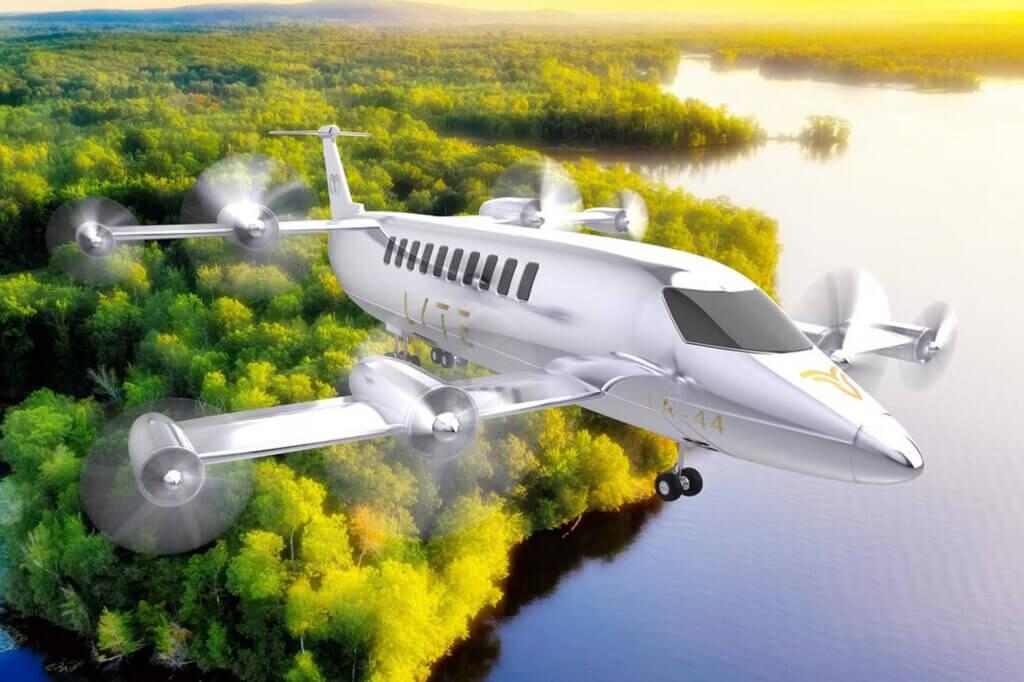
Lyte Aviation has designed the LA-44 SkyBus as a 40-passenger, tiltwing, hydrogen-electric vertical-takeoff-and-landing aircraft with a range of up to 1,000 km and top speed of 500 kph.
GENEVA—Of the many companies developing electric vertical-takeoff-and-landing vehicles, arguably none are thinking as big as Lyte Aviation.
For its launch vehicle, the startup has designed the LA-44 SkyBus, a 40-passenger, tiltwing, hydrogen-electric vertical-takeoff-and-landing aircraft with a range of up to 1,000 km (620 mi.) and top speed of 500 kph (140 mph).
While the 40-seat SkyBus is targeted as an intercity vehicle intended for mass transport, the company has also pivoted to developing a more spacious 19-seater aimed at the private and business aviation segment, offering a unique solution that founder and CEO Freshta Farzam says is unlike anything else available to business travelers, rivaling the carrying capacity of the largest civilian helicopters but with lower operating costs and a far superior noise and emissions footprint.
“We’re the first ones with an eVTOL of this volume and range, and there are a number of companies that have a need for this kind of sustainable, high-capacity aircraft,” Farzam told Aviation Week on the sidelines of the European Business Aviation Conference and Exhibition (EBACE 2024) here. “Our decision to develop the 19-seater was in direct response to customer demand we’re seeing from business aviation, and we saw a way to be flexible and adapt our 40-seat SkyBus to that market segment. It’s essentially the same exact aircraft—the only difference between the two are the interiors.”
In addition to the mass transport and business segments, Farzam says Lyte is now targeting the humanitarian response mission as well. “We think that given our capacity, range and the fact that we don’t need to rely on runway infrastructure, we can offer a really strong solution for humanitarian flights,” Farzam says. “We have the performance and flexibility to fly teams of first responders directly into disaster areas on point-to-point flights. For the humanitarian version, we actually think we can take the range higher, potentially up to 2,000 km.”
Lyte Aviation is working through detailed design for its aircraft, Farzam says, adding that the team is focused on finalizing the design ahead of development of an initial full-scale prototype in the 2026 timeframe.
Service entry is tentatively targeted for 2030.





